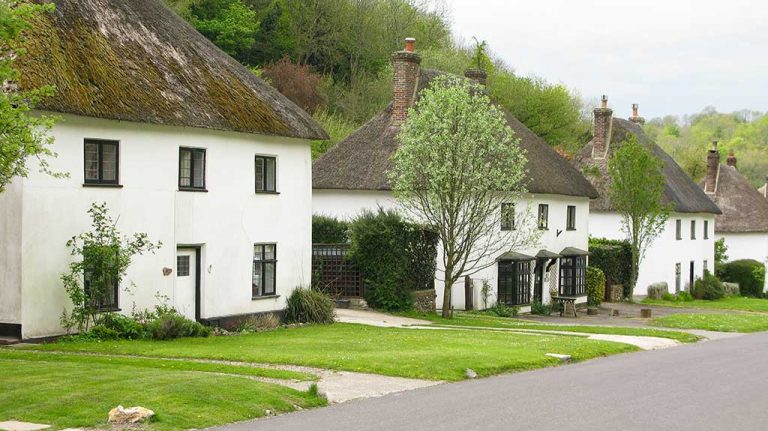But those men were nowhere near as rich as the landowning aristocrats in Britain. What counted for a mansion in North America would have been an average country manor across the ocean, where the richest lords were building giant palaces.
Furthermore, as Nicola Cornick wrote at the Word Wenches, some wealthy men even remade the landscape around their homes just for aesthetic reasons:
If we look at the Georgian and Regency period, there did seem to be a penchant for noblemen sweeping aside old villages in order to improve the look of their country estates. At Wimpole Hall, the 2nd Earl of Harwicke commissioned Capability Brown to redesign his parkland to improve the views from the mansion in 1767. Sadly this involved sweeping aside various small villages! . . .American scholars often write about how much effort George Washington or Thomas Jefferson put in (and forced from others) to make their homes just the way they wanted. But no project in the colonies or early America reached that Old World level of grandiosity.
In 1780, Joseph Damer, Lord Milton, decided that the market town of Middleton, adjacent to his home at Milton Abbey, was spoiling his rural peace and quiet. He commissioned an architect called William Chambers plus the ubiquitous Capability Brown to design a new village, Milton Abbas [shown above], in a wooded valley away from the Abbey.
Most of the townspeople were relocated there and Middleton was demolished and the site landscaped. Thirty six identical thatched cottages were built with the intention of each housing 2 families. Each house was fronted with a lawn and planted with a horse chestnut tree. No doubt Lord Milton felt he was being very generous and perhaps plenty of people were grateful for a new house. To us these days, however, does it feel like generosity or breathtaking arrogance?

First of all, given the horrific Greater Boston housing market, who wouldn't be happy to get a cottage with a nice horse chestnut tree in front. In Brookline/Newton, those would doubtless go for north of $1 million apiece!
ReplyDeleteAll joking aside, your post is a good corrective to various boasts we find in the historical literature about the level of gentility of the richest colonial and early-national Americans.
Truth be told, the domestic arrangements of even the richest American's housing would barely exceed that of a British rustic country squire or prosperous outport merchant. In other words, colonial American society was a kind of pyramid with a squirerachy/provincial mercantile top with the aristocratic pinnacle entirely absent.
James Fichter makes this point much more effectively than I can in his book So Great a Proffit